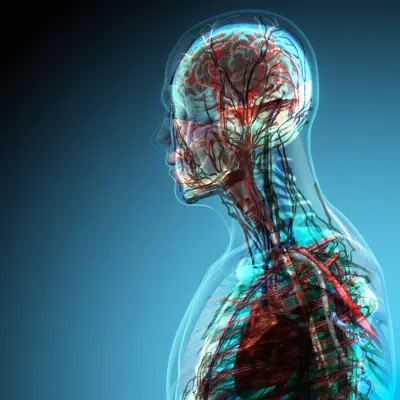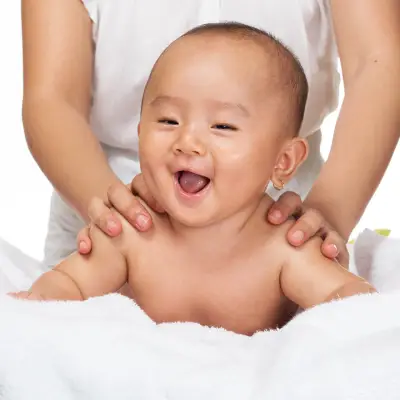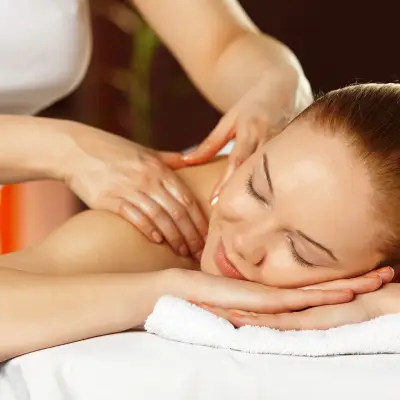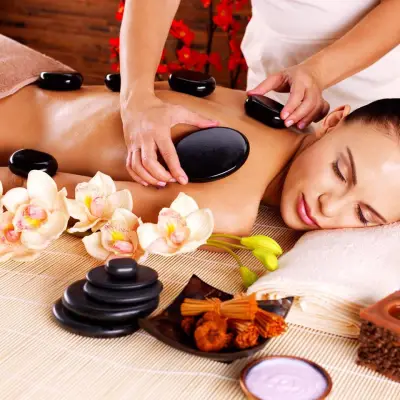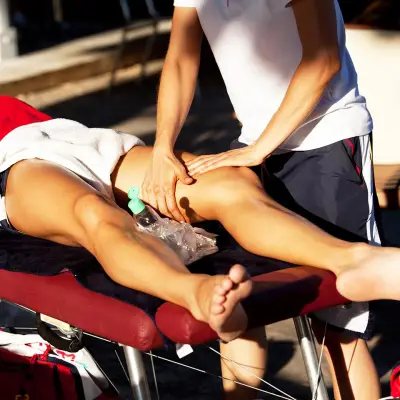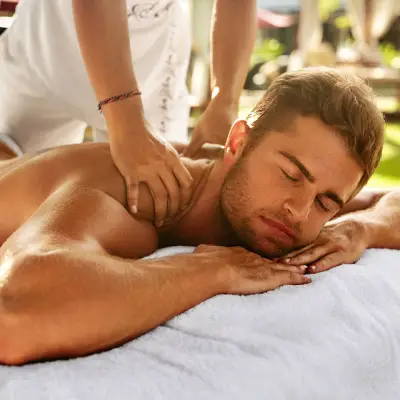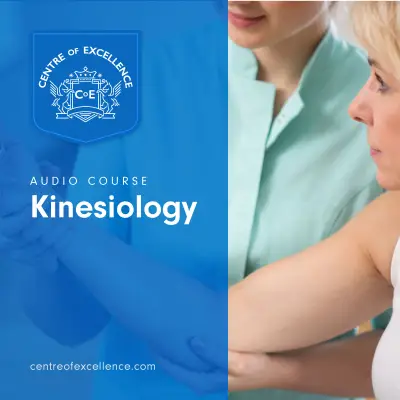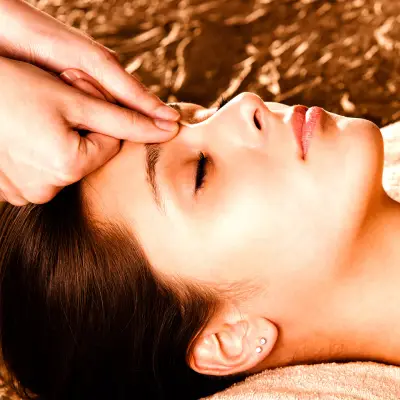Do you ever get stubborn knots and irritable muscle tension? Are you looking for new ways to feel relaxed, refreshed, and rejuvenated? A warm bamboo massage is a luxurious and unique form of massage therapy that uses heated bamboo sticks to provide a deep tissue massage experience. The bamboo sticks are warmed to just the right temperature, allowing the therapist to effectively target problem areas, decrease spasms, and relieve stress.
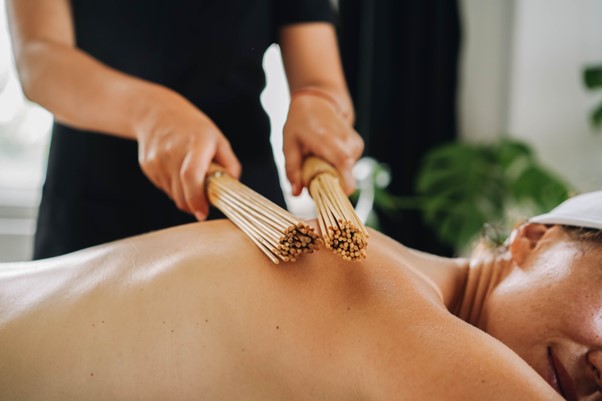
Bamboo massages have been used in Southeast Asian countries for centuries, and they have some unbelievable benefits. In this blog post, we detail some of the practice's many benefits, how it is performed, and its general history.
Jump To:
What Is A Bamboo Massage?
A warm bamboo massage is a therapeutic and luxury massage used by therapists to relieve muscle tension. This practice has been performed for centuries and is said to have numerous benefits.
A warm bamboo massage is performed using several pieces of bamboo of different shapes and sizes. These bamboo pieces are heated and used to knead tight muscles and roll out tension. There is a light tapping when the massage is performed. At no point is the person receiving the massage hit with the bamboo. If the recipient of the massage feels any pain or discomfort during the massage, then too much pressure is being applied.
The massage is so effective because the heat from the warm bamboo penetrates the muscles, causing them to relax. This makes accessing areas of underlying tension easier, meaning a greater effect without the soreness or pain of other massages, such as deep tissue or intense sports massages.
Stimulating tissue with bamboo is thought to alleviate muscle tension by dispersing heat caused by toxin buildup and poor circulation, akin to the effects of deep-tissue massage or trigger-point therapy. Recipients of the massage report a whole-body tingling or warming sensation after a warm bamboo treatment. The body naturally responds to stress—whether physical, mental, or emotional—by tensing up. Chronic tension can lead to muscle knots, pain, and reduced flexibility. Warm bamboo massages can help reverse this cycle, rejuvenate your body, and soothe your mind.
Recommended for you!
Best SellersWhere Does The Bamboo Massage Come From?
While the treatment is fairly new to the UK, bamboo massages have been used in Asia for centuries. This could be linked to the historical usage and importance of bamboo material in Asia. Since bamboo was discovered in China over 5,000 years ago, the material has been thought to have many practical and, sometimes, therapeutic uses. Bamboo, one of the fastest-growing plants on Earth, has symbolised durability, fertility, youth, prosperity, and serenity in Asia for thousands of years. A testament to the material's importance is that before that long before the invention of paper, the Chinese people recorded their history on thin bamboo sheets.
It is largely thought that the bamboo massage originated in Southeast Asia, when a Spa Therapist observed monkeys massaging each other with bamboo while on her way to work.
One theory of its development is linked to Nathalie Cecilia, who was originally from France. She developed the massage technique for her North American clients using Bamboo, mainly to provide a deeper massage and to save her hands. She adeptly called the treatment bamboo fusion.
Another theory is that massage therapist Ernesto Ortiz developed Tian Di Bamboo massage by integrating the principles of Traditional Chinese Medicine. He used bamboo sticks of various sizes as extensions of his hands to achieve deeper tissue work.
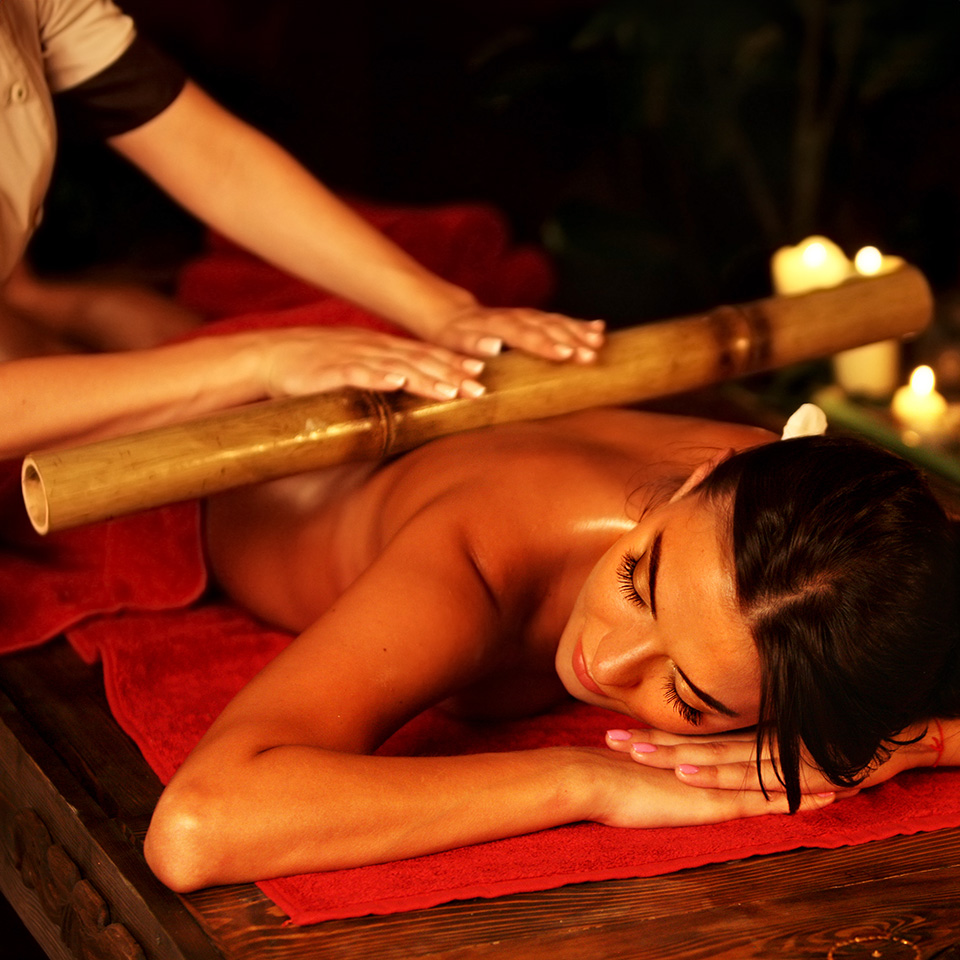
How To Do a Bamboo Massage
Mastering the techniques and application of Bamboo massage can be challenging for the uninitiated. It involves understanding how to utilise bamboo sticks effectively to achieve therapeutic goals while ensuring a comfortable massage experience for the recipient. While it is always suggested to seek out an experienced professional for your massage, for those who are wondering about some of the most popular techniques, here are some of the main bamboo massage techniques:
Gliding Strokes
One of the quintessential techniques used by any bamboo massage therapist is gliding strokes. The therapist uses the longer bamboo sticks for smooth gliding strokes along the larger muscle groups. This technique is similar to effleurage in a Swedish massage and is effective for initiating relaxation and warming up various muscles in the body.
Rolling and Rotating
Rolling and rotating are vital techniques in bamboo massages. To perform, roll the bamboo stick over the muscles, which helps provide deeper muscle penetration, akin to deep tissue massages. This technique is especially beneficial for areas that require more focused pressure.
Kneading
The technique of kneading has proven extremely effective at breaking down knots and relieving muscle tension. To perform this technique, employ shorter bamboo sticks, which are more effective at targeting smaller muscles.
Tapping and Percussion
Taping and percussion can help stimulate blood flow and invigorate the area being massaged. This technique can be performed with the ends of the bamboo sticks and applied rhythmically.
Advanced Techniques
While the above techniques are considered basic, there are advanced techniques that more experienced therapists can utilise. Some advanced techniques include trigger point therapy, which uses the rounded ends of bamboo tools to target localised adhesions; lymphatic drainage, which supports the function of the lymphatic system, and joint mobilisation, which gently mobilises joints via the bamboo sticks.
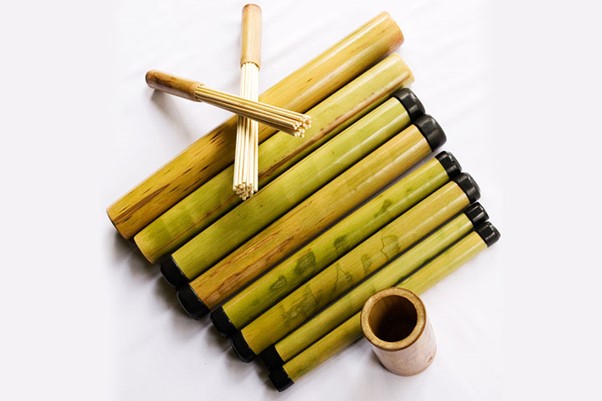
Benefits of Bamboo Massages
Bamboo massages include many benefits, such as:
Pain Reduction
Because of bamboo massages' therapeutic qualities, they have proven effective at pain relief. The massage can alleviate chronic pain conditions such as back pain, neck pain, and headaches.
Mental Clarity
One of the most surprising benefits of bamboo massages is mental clarity. The relaxing effects of the massage can contribute to better mental clarity and focus.
Muscle Relief
The firm pressure from bamboo sticks helps to relieve muscle tension and knots, providing deep tissue relief.
Improved Circulation
The rolling and pressing motions of a bamboo massage enhance blood flow, promoting better circulation throughout the body.
Detoxification
The improved circulation from the bamboo massage aids in the removal of toxins from the body, enhancing overall detoxification.
Improved Skin Health
The bamboo massage can stimulate the skin, promoting better skin tone and texture.
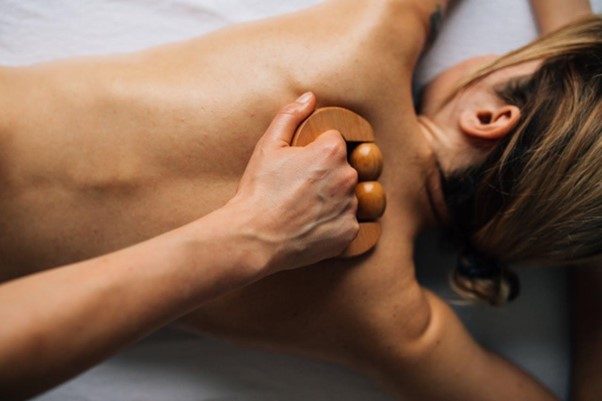
Stress Reduction
We could all use a way to reduce stress from time to time. Bamboo massage, with its soothing nature, helps to reduce stress and anxiety, promoting a sense of relaxation and well-being.
Increased Flexibility
Regular bamboo massage can help improve muscle flexibility and joint mobility.
Energy Boost
If you constantly feel low on energy and are looking for ways to give yourself a much-needed boost, it may surprise you to know that a bamboo massage can help. By releasing tension and improving circulation, bamboo massages can increase energy levels and reduce fatigue.
Balanced Body and Mind
Many ancient Chinese practices encourage the flow of chi, which helps to improve the balance in the body and mind. Bamboo massage principles help balance the body’s energy, leading to overall harmony and well-being.
Learn More About Bamboo Massages
If you are interested in the ancient art of bamboo massages, why not enrol in our accredited Bamboo Massage Diploma course? This excellent course is available at a discounted price of £29 instead of the original price of £127, further illustrating Centre of Excellence’s commitment to making learning more achievable. So what are you waiting for? Contact us today!
